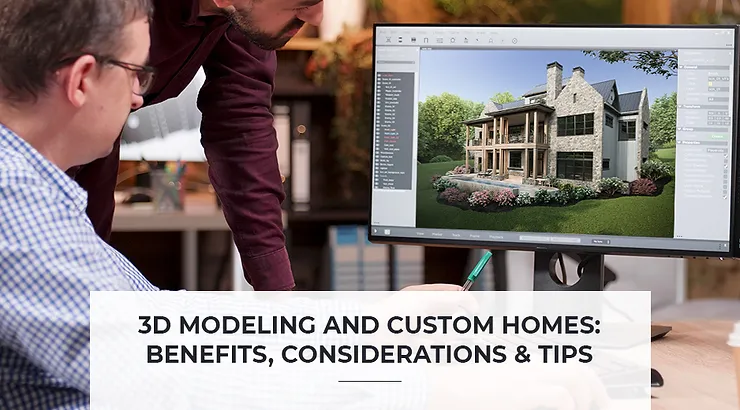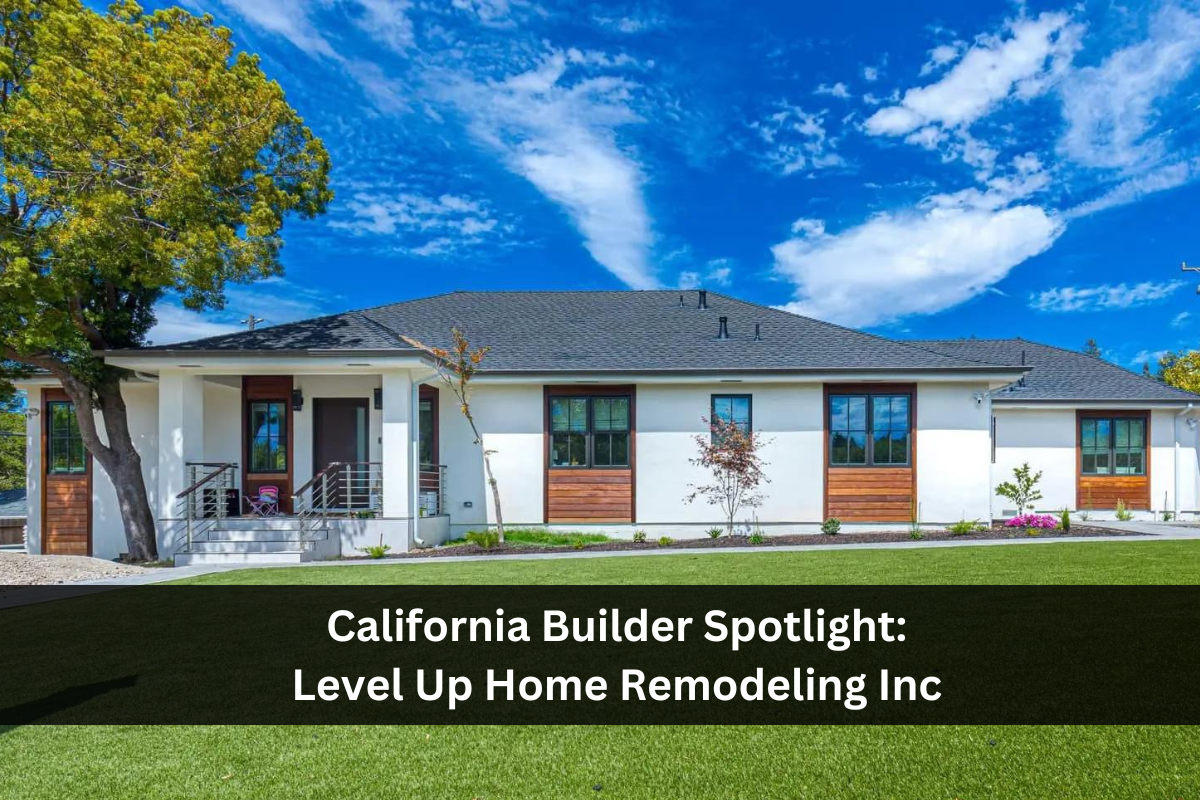Many residential architects and builders only offer two-dimensional construction documents, even though they are often confusing and inadequate as representations of your dream home. Considering the truly remarkable technological capabilities of 3D modeling, anyone who is about to spend a significant amount of money constructing a custom home will want to work with a team that offers high-quality 3D rendering and modeling services.
There are many benefits to using 3D modeling as a part of the custom home-building process, which we’ll break down in this article. In general, though, 3D modeling can ensure that the final product both honors your initial vision and keeps you within your budget.
At first glance, it’s not always apparent that 3D modeling is the game-changer that it is. If you think it won’t be worth the trouble to track down an architect that offers these services, think again.
Ver the course of your project, 3D rendering and modeling can save you tens of thousands of dollars, if not hundreds of thousands of dollars, all while ensuring that the final product truly is the home of your dreams.
The Benefits of 3D Modeling for Custom Homes
Is it worth hiring an architect that offers 3D rendering and modeling services? How can this technology improve the home-building process when you’re working to create your dream home?
1. Visualizes Site Layout
One of the most difficult parts of the home designing process is envisioning what the structure will really feel like once it is built. Two-dimensional renderings simply don’t do justice to what an environment feels like and how spaces flow between one another.
Using 3D modeling, you don’t have to leave nearly as much information up to your imagination. Modern technology can illustrate, for instance, how the sun will fall on the site at various times of day and in different seasons, as well as where trees will cast shadows and how the landscaping will appear once fully matured.

Beyond that, you can use 3D modeling to gain a clear view of how the site will look with different iterations of exterior lighting at night. Understanding how both natural and artificial light will impact what it feels like to inhabit your space is something that is difficult to picture when only using two-dimensional blueprints– with 3D modeling, a lot of guessing is taken out of the equation.
Of course, lighting isn’t the only factor to consider when you’re thinking about your site layout. The way that your home fits into the natural shape of the earth can have a big impact on your home environment, and you’ll be able to see through 3D modeling how every curve of the land will feel on the ground in relation to your new home.
2. Helps Identify Problems Earlier
Another major benefit of 3D modeling for custom home construction is that it can help to identify problems much earlier in the process. There are countless moving parts in any building project, and several teams coordinate to create the final outcome. Before 3D modeling, this often meant that issues were only discovered when they were costly and time-consuming to fix.

Nowadays, you can catch problems early in the design process. It’s much easier and less expensive to move things around on a computer than they are on your construction site. For this reason, 3D modeling is essential to keeping your home construction process on budget and avoiding expensive mistakes.
Though building the home of one’s dreams is a thrilling and exciting process, it can also be ridden with lots of stress and unanticipated problems. That’s why we’ve created a step-by-step resource– our Custom Home Guidebook & Workshop– that reveals how you can achieve the home you’ve always wanted on time and on budget.
3. It Makes It Easy to Review Designs
The design stage of the home construction process has historically been challenging for all parties involved– the architect, builder, homeowners, and others- all need to work to be on the same page about the project’s intended outcome.
With 3D modeling, it’s much easier for everyone to be on the same page. How the home will be laid out and fit into its environment is clearly communicated, leaving all parties involved with a clear sense of the plan.

This also means that architects, builders, and homeowners have the ability early on in the process to raise concerns, request changes, or propose additional ideas for the design. Like many things in life, it’s much simpler and less expensive to spend longer on the project’s planning phase rather than to try and make alterations once construction has already begun.
4. It Allows a Greater Ability to Create the Perfect Design
With two-dimensional models, it can be difficult for homeowners to really understand what their house will look and feel like when it is built.

Though building 3D models is certainly still time-consuming, it allows clients to fully explore their designs in real time and refine their vision to ensure they truly end up with the home of their dreams.
Architects that use 3D modeling are able to quickly manipulate simple aspects of the model, such as rotating the virtual structure, changing perspectives, or altering the view.
Some 3D modeling software programs can integrate actual photographs of streetscapes from the location so that real-life surroundings can be taken into account when designing the structure. In many cases, the final result of a 3D model using real-life photographs can end up looking indistinguishable from a photo of an actual structure.
Our mission (and specialty) at Dream Home Studio is taking the vision you have for your dream home and turning it into a reality. You can learn more about our architectural design services by watching this video.
5. Promotes Collaboration Between All Parties
Finding the right professionals to help build your dream home can feel like an overwhelming undertaking, but it’s well worth the effort to ensure that you put together a design/build team that will work to help make your dream home a reality.

When your architect and builder work together collaboratively, it can help ensure that your architect isn’t designing features that will burst through your expected budget. 3D modeling only makes the collaboration process easier for all parties involved– your architect, your builder, and you– to make sure that everyone is working toward creating a shared vision on the same schedule and budget.
Selecting the right builder and signing the right contractor is essential to ensuring the best possible outcome for you and your dream home. Make sure you watch our video about builder selection and how your contract should be structured to give you the protection you deserve.
6. Visualizes Materials and Colors
Using the power of 3D modeling, you will be able to see your home digitally rendered with the materials and finishes you desire. You can look at your home as if it was built before the ground has been broken on the construction site, letting you visually understand how all the different pieces will fit together.

No matter where you are in the home design process, you’re likely already aware of just how many little decisions go into making a dream home. You must consider materials, quality, color, functionality, and budget at every turn. Of course, the last thing any homeowner wants is to move into the home they built only to find that they wished they had made different decisions.
Rather than making changes to the design once the project is underway and materials are on-site, 3D modeling allows homeowners plenty of opportunity to visualize what their design choices will look and feel like in real life. What this means, in practice, is that it’s much more possible to stay within your budget without compromising your ultimate vision of your dream home.
7. Helps Keep Your Project On-Budget
One of the most distressing parts of the custom home building process is worrying that the project will go over budget. This isn’t an unfounded fear, either– it’s all too common for the final price to creep upward and end up costing you way more than you initially intended to spend.

Using 3D modeling, you’ll be protected from price creep due to the technology’s ability to secure accurate numbers for each part of the project. With two-dimensional models, the estimated linear and square feet requirements can be off-base enough to cause significant sticker shock once everything is all said and done. However, 3D modeling capabilities allow for precise linear and square footage calculations so that there isn’t the threat of inflated costs and price creep.
Considerations and Tips for 3D Modeling and Custom Homes
Most architects don’t offer 3D rendering services, meaning many homeowners only have two-dimensional designs. Though 3D modeling and rendering services add additional cost to your project, it’s important to understand just how expensive it can be not to use these services.
There will always be expensive mistakes and issues built into two-dimensional home plans. You won’t be able to identify these ahead of time, and builders likely won’t either, meaning that you won’t discover a problem until the home-building process is underway. 3D modeling makes it much more possible to pinpoint issues before anything has started to happen on-site, meaning that your investment in 3D modeling will have been well worth the cost.

For bare-bones, low-budget projects, it might be hard to justify the costs of 3D rendering and modeling services from your architect. However, if you’re truly building your dream home, you’re likely expecting to make a huge investment in creating the ideal outcome. It’s worth understanding that the extra expense of utilizing 3D modeling services can save you tens of thousands, if not hundreds of thousands, of dollars during the home-building process.
We’ve found that you can save 5% to 10% of your total construction cost alone using 3D modeling services due to the elimination of inflated prices due to imperfect square footage and linear footage estimates. When you add in the reality that you’ll also be able to identify issues or make changes before breaking ground at the construction site, it becomes clear that 3D modeling will not only help you save money and avoid going over budget but it will also ensure that you end up with the dream home you envisioned.
Are you beginning the process of searching for the perfect architect? Make sure you ask these twelve questions during your interview.
Translating Your Vision of a Dream Home Into a Reality
When we picture our dream home, it’s easy to see separate, disconnected elements in our mind’s eye. We envision a sunny deck we can lounge on during a lazy Sunday and luxurious, energy-efficient amenities that help support our lifestyle. As we are building our vision, we pick up bits and pieces of inspiration from other posh homes we’ve seen– perhaps impressive, modern glass windows allowing for tremendous mountain views or ornate, traditional dining rooms with crystal chandeliers and intricate details.

What can be truly difficult, though, is putting all of these various pieces together and understanding how the rooms will flow together and the overall feel of your home. The site of your home should also inform the design as well, which can be practically impossible to think about when you’re just looking at two-dimensional drawings.
3D modeling has revolutionized the ability for homeowners to create the home of their dreams without running into expensive, deadline-busting mistakes. You can see everything from how the house will shade the yard at different times of the day to how specific materials will influence the feel of your home’s interior and exterior.
If you’ve made the decision to build a custom home, it means that you are choosing to invest in the ultimate well-being of both yourself and your family. 3D modeling can help you feel a greater sense of certainty that your design/build team is on-board with your vision and that the construction process won’t cost more and will take longer than you expected.
At Dream Home Studio, it’s our mission to help people who have a vision of their dream home achieve the outcome they have always dreamed of without encountering any costly mistakes or surprises.







